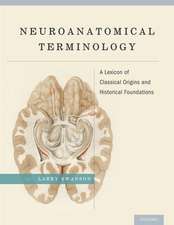Tumor Dormancy, Quiescence, and Senescence, Volume 2: Aging, Cancer, and Noncancer Pathologies: Tumor Dormancy and Cellular Quiescence and Senescence, cartea 2
Editat de M.A. Hayaten Limba Engleză Hardback – 16 dec 2013
| Toate formatele și edițiile | Preț | Express |
|---|---|---|
| Paperback (1) | 951.14 lei 6-8 săpt. | |
| SPRINGER NETHERLANDS – 18 sep 2016 | 951.14 lei 6-8 săpt. | |
| Hardback (1) | 965.52 lei 6-8 săpt. | |
| SPRINGER NETHERLANDS – 16 dec 2013 | 965.52 lei 6-8 săpt. |
Preț: 965.52 lei
Preț vechi: 1177.46 lei
-18% Nou
Puncte Express: 1448
Preț estimativ în valută:
184.75€ • 193.59$ • 152.73£
184.75€ • 193.59$ • 152.73£
Carte tipărită la comandă
Livrare economică 11-25 aprilie
Preluare comenzi: 021 569.72.76
Specificații
ISBN-13: 9789400777255
ISBN-10: 9400777256
Pagini: 348
Ilustrații: XXVII, 320 p. 49 illus., 33 illus. in color.
Dimensiuni: 178 x 254 x 24 mm
Greutate: 1.02 kg
Ediția:2014
Editura: SPRINGER NETHERLANDS
Colecția Springer
Seria Tumor Dormancy and Cellular Quiescence and Senescence
Locul publicării:Dordrecht, Netherlands
ISBN-10: 9400777256
Pagini: 348
Ilustrații: XXVII, 320 p. 49 illus., 33 illus. in color.
Dimensiuni: 178 x 254 x 24 mm
Greutate: 1.02 kg
Ediția:2014
Editura: SPRINGER NETHERLANDS
Colecția Springer
Seria Tumor Dormancy and Cellular Quiescence and Senescence
Locul publicării:Dordrecht, Netherlands
Public țintă
Professional/practitionerCuprins
Preface. I Molecular Mechanisms.- Asymmetric Dimethylarginine Accelerates Cellular Senescence.- Membrane-Derived Extracellular Vesicles from Endothelial Progenitor Cells Activate Angiogenesis.- Induction of P21-Dependent Senescence: Role of NAE Inhibitor MLN4924.- Regulation of the Novel Senescence Pathway by SKP2 E3 Ligase.- Oncogene-Induced Senescence: Role of Mitochondrial Dysfunction.- Interleukin- 6 induces Premature Senescence Involving Signal Transducer and Activator of Transcription 3 and Insulin-Like Growth Factor-Binding Protein 5.- A Role for the Nuclear Lamina Shape in Cell Senescence and Aging.- Upregulation of Alpha-2-Macroglobulin in Replicative Senescence.- Elevation of Ceramide in Senescence: Role of Sphingolipid Metabolism.- Molecular Signals Underlying Hair Follicle Morphagenesis and Cutaneous Regeneration.- Role of Chromatin –Remodeling Factor Jun Dimerization Protein 2 (JDP2) in Cellular Senescence.- Induction of Cellular Senescence: Role of Mitogen-Activated Protein Kinase-Interacting Kinase 1.- Mechanisms of Premature Cell Senescence. II Tumor And Cancer.- Nuclear Protein Pirin Negates the Cellular Senescence Barrier Against Cancer Development.- Defects in Chromatin Structure and Diseases.- The Role of Fibrosis in Tumor Progression and the Dormant to Proliferative Switch.- Diagnosis of Branchial Cyst Carcinoma: Role of Stem Cells and Dormancy.- Function of ING Proteins in Cancer and Senescence.- Premalignancy and Cellular Senescence.- Loss of CDH1 Triggers Premature Senescence in Part Via Activation of Both the RB/E2F1 and the Claspin/CHK1/P53 Tumor Suppressor Pathways.- Suppression of Premature Senescence and Promotion of Metastatic Transformation: Role of Reduced TGF-Beta Signaling in Human Cancer Progression.- Senescence Escape in Melanoma: Role of Spleen Tyrosine Kinase SYK.- Micrometastatic Cancer Cells: Role of Tumor Dormancy in Non-Small Cell Lung Cancer. III Quiescent Cd4+ T Cells Inhibit Multiples Stages Of Hiv Infection StemCells And Cancer Stem Cells.- Senescent-Derived Pluripotent Stem Cells are able to Redifferentiate into Fully Rejuvenated Cells.- The Transcription Factor Gata2 Regulates Quiescence in Haematopoietic Stem and Progenitor Cells.- Dormancy and Recurrence of Cancer Stem Cells in Bone: Role of Bone Morphogenetic Proteins.- Role of Microenvironment in Regulating Stem Cell and Tumor Initiating Cancer Cell Behavior and its Potential Therapeutic Implications.- Index.
Textul de pe ultima copertă
In this second volume in the series exploring Tumor Dormancy, Quiescence, and Cellular Senescence, discussion is focused on the role of tumor dormancy in diseases such as breast cancer, melanoma, prostate cancer, liver cancer and lung cancer. M. A. Hayat, the series editor, writes in the preface that little is known of factors regulating the transition of residual cancer into a dormant state or the subsequent reinitiation of growth. A majority of us, he says, have in situ tumors that may remain dormant or may progress into a lethal form of cancer; the former are prevented from recruiting their own blood supply.
Section I covers Molecular Mechanisms, with chapters on the role of NAE inhibitor MLN4924; oncogene-induced senescence; the role played by mitogen-activated protein kinase in the induction of cellular senescence; mechanisms of premature cell senescence and other topics. Section II examines Tumor and Cancer, discussing defects in chromatin structure and diseases; the role of fibrosis in tumor progression and the dormant to proliferative switch; the function of ING proteins in cancer and senescence and more. The final section is devoted to Stem Cells and Cancer Stem Cells, featuring chapters showing that senescent-derived pluripotent stem cells are able to redifferentiate into fully rejuvenated cells; that the transcription factor Gata2 regulates quiescence in haematopoietic stem and progenitor cells; and discussing dormancy and recurrence of cancer stem cells in bone.
The contributors point out that the quiescent state regulates hematopoietic stem cells and muscle stem cells, and detail the role of kinase in the mediation of reversible quiescent state in a subset of ovarian, pancreatic, and colon cancers. Molecular mechanisms underlying stress-induced cellular senescence and accumulation of reactive oxygen species and induction of premature senescence are also presented. Discussion includes the important role ofmicroRNAs in oxidative stress-induced apoptosis and senescence and the effect of microRNA as a modulator of cell proliferation in lung cancer. The book includes an explanation of the suppression of cellular senescence in glioblastoma brain tumor.
Taking a broad and varied perspective, this volume was written by 70 contributors representing 11 countries.
Section I covers Molecular Mechanisms, with chapters on the role of NAE inhibitor MLN4924; oncogene-induced senescence; the role played by mitogen-activated protein kinase in the induction of cellular senescence; mechanisms of premature cell senescence and other topics. Section II examines Tumor and Cancer, discussing defects in chromatin structure and diseases; the role of fibrosis in tumor progression and the dormant to proliferative switch; the function of ING proteins in cancer and senescence and more. The final section is devoted to Stem Cells and Cancer Stem Cells, featuring chapters showing that senescent-derived pluripotent stem cells are able to redifferentiate into fully rejuvenated cells; that the transcription factor Gata2 regulates quiescence in haematopoietic stem and progenitor cells; and discussing dormancy and recurrence of cancer stem cells in bone.
The contributors point out that the quiescent state regulates hematopoietic stem cells and muscle stem cells, and detail the role of kinase in the mediation of reversible quiescent state in a subset of ovarian, pancreatic, and colon cancers. Molecular mechanisms underlying stress-induced cellular senescence and accumulation of reactive oxygen species and induction of premature senescence are also presented. Discussion includes the important role ofmicroRNAs in oxidative stress-induced apoptosis and senescence and the effect of microRNA as a modulator of cell proliferation in lung cancer. The book includes an explanation of the suppression of cellular senescence in glioblastoma brain tumor.
Taking a broad and varied perspective, this volume was written by 70 contributors representing 11 countries.
Caracteristici
Role of Dormancy in various cancer types is explained Role of Senescence in the aging process is also included Mechanisms underlying premature cellular senescence is detailed The discussion in chapters is reinforced by color figures and Tables Includes supplementary material: sn.pub/extras
















